
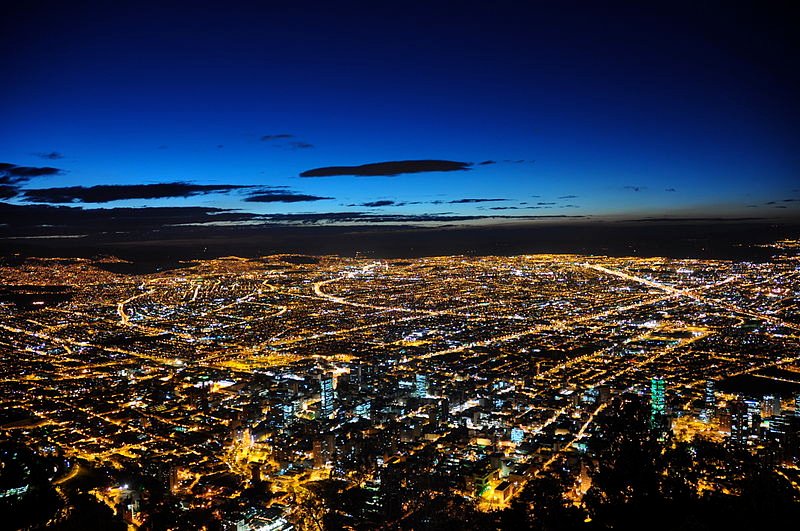 Bogota at night
Bogota at nightSource: https://commons.wikimedia.org/wiki/File:Bogot%C3%A1_de_noche.jpg
Author: Jorge Díaz

Bogotá is the capital and biggest city in Colombia. The city limits cover 1,587 sq km. Bogotá has a population of 7.4 million people (2011 estimate). Its metropolitan area, which includes neighboring municipalities such as Chía, Cota, Soacha, Cajicá and La Calera, has a total population estimated at around 8.6 million people. Bogotá is also the capital of the Cundinamarca department, although since the border realignment in 2000, it is no longer administratively within the department.
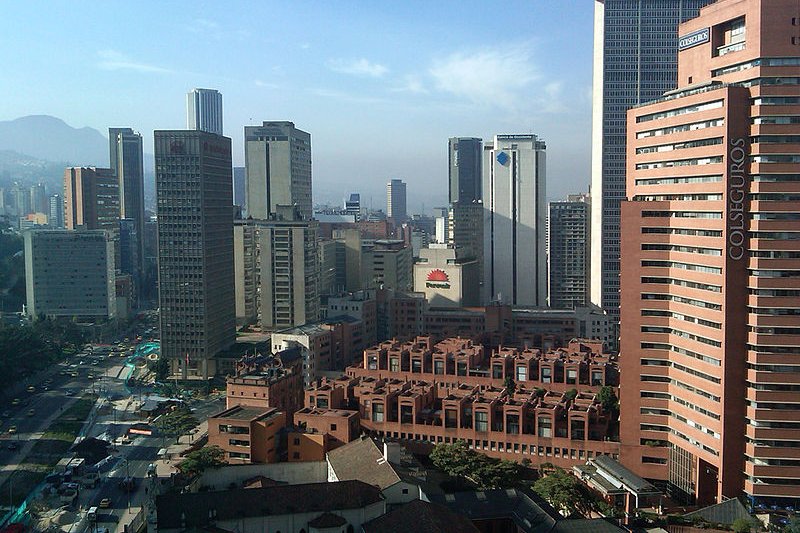 Centro Internacional, Bogotá
Centro Internacional, BogotáSource: https://commons.wikimedia.org/wiki/File:Centro-Internacional-Bogot%C3%A1.jpg
Author: Mrtony77

Bogotá is the third-highest capital city in the world after La Paz and Quito. It is located at an elevation of 2,625 m (8,612 ft) above sea level. The city is in a high plateau in the Andes. The Bogotá area is called a sabana, literally meaning "savannah". The sabana of Bogotá is bordered by the Eastern Cordillera of the Andes to the east. The Bogotá River flows through the western edge of the city. To the south of Bogotá is the Sumapaz Paramo moorland.
Bogotá experiences a subtropical highland climate. The temperature is fairly constant throughout the year. The biggest different in temperature is seen in January, which registered both the highest and lowest temperatures. The average high temperature in January is 20°C (68°C) while the average low is 5.4°C (41.7°F). Rain is heaviest in October (115 mm, 4.5 in) and April (111 mm, 4.4 in).
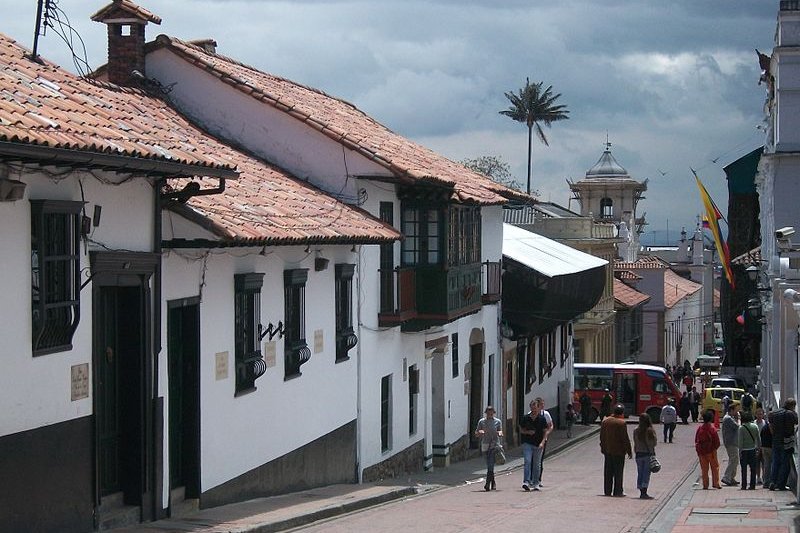 La Candelaria, Bogotá
La Candelaria, BogotáSource: https://commons.wikimedia.org/wiki/File:Bog_La_Candelaria.JPG
Author: Pedro Felipe

Bogotá comprises 20 localities which is further subdivided into numerous neighborhoods. Neighborhoods to the north and northeast of Bogotá tend to be the more affluent. These are close to the Eastern Cordillera. The poorer neighborhoods are to the south and southeast of the city.
The Bogotá area was inhabited by various indigenous tribes that had earlier migrated from Mesoamerica. The city was founded by Spanish conquistador Gonzalo Jiménez de Quesada, who was on a quest in search of the legendary Dorado. The date 6 August, 1538 is generally accepted as the date when Bogotá was founded - though no actual document exist to that effect.
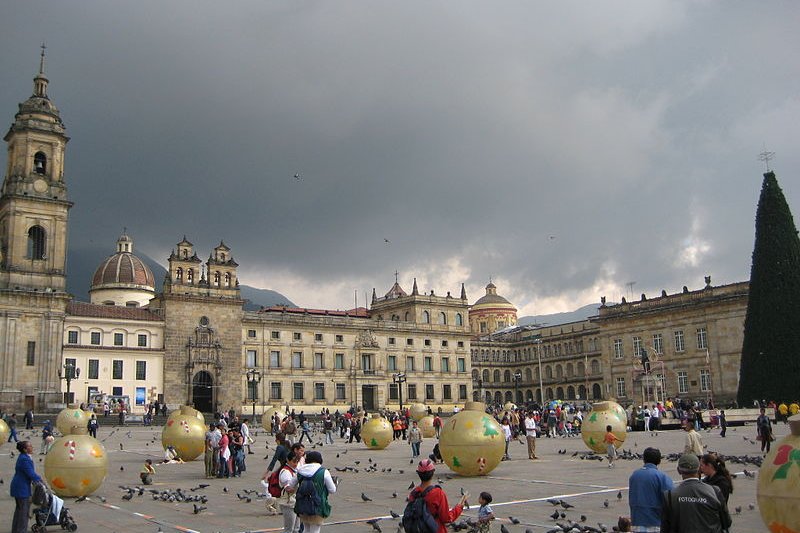 Plaza Bolívar with the Primate Cathedral of Bogotá
Plaza Bolívar with the Primate Cathedral of BogotáSource: https://commons.wikimedia.org/wiki/File:Bogota_plein.JPG
Author: Iijjccoo

Today Bogotá is the fourth most influential financial center in Latin America. The city is one of the largest industrial centers in Latin America. Its GDP is about 25% of Colombia's. However unemployment remains high, at about 11.3% in 2008.
Visiting Bogotá, Colombia
The El Dorado International Airport is the gateway to Bogotá. It is the largest airport in Latin America in terms of cargo and third largest in terms of passenger traffic. The airport receives international flights from major cities in the Americas and Europe.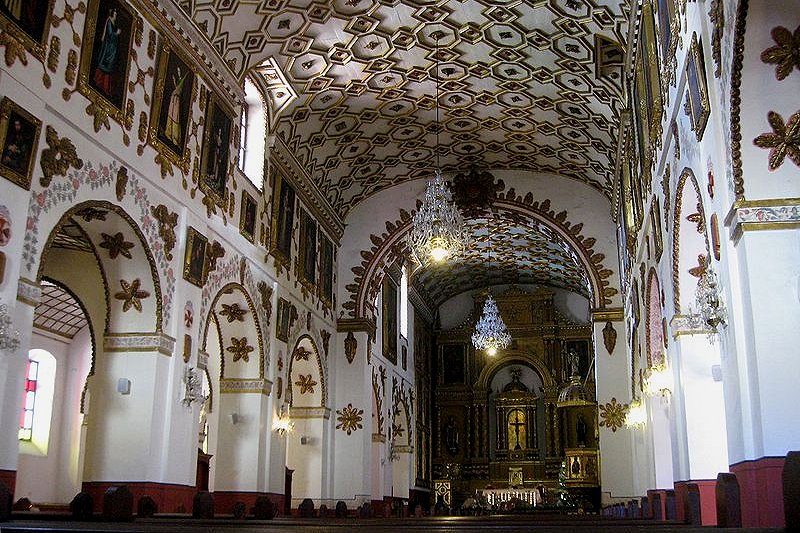 Iglesia de San Agustín, Bogotá
Iglesia de San Agustín, BogotáSource: https://commons.wikimedia.org/wiki/File:Iglesia_de_San_Agustin-Nave_Central-Bogota.jpg
Author: Peter

Arriving at El Dorado International Airport, you have the option of taking the bus or the taxi to downtown Bogotá. There is a bus stop (paradero) a short distance from the main entrance of the Arrival Hall. The fare from airport to Bogotá is only 1,200 COP, and is useful for visitors who are familiar with where they are going. Otherwise your choice is the taxi. There is a taxi counter where you advise your destination. This will be printed on your ticket. You pay on arrival, according to amount as stated on your ticket. Fare ranges from 15,000 to 25,000 COP for destinations in Bogotá.
Exploring Bogotá
Taxis are plentiful and inexpensive. However traffic jams are common on the streets of Bogotá, so you may often be sitting in your cab for a long while. Fare is calculated by "ticks". The start of a journey begins with 25 ticks, and an increment of one tick for every 1/10 kilometer or 30 seconds. The rate is shown on a rate card in the taxi.Places of Interest in Bogotá, Colombia
Sights in La Candelaria- Banco de la Republica Art Collection
- Casa de Moneda
- Cultural Heritage Museum
- Donación Botero
- Gold Museum
- Museum Francisco José de Caldas
- Museum of Colonial Art
- Museum of Religious Art
- National Police Historical Museum
- Cerro de Monserrate
- Museo Nacional
- Museum of Modern Art of Bogota
- Photography Museum
- Planetario Distrital
- Plaza de Toros de Santamaria
- Torre Colpatria
- Hacienda Santa Bárbara
- Parque & Museo El Chiquo
- Jardín Botánico José Celestino Mutis
- Maloka
 Latest updates on Penang Travel Tips
Latest updates on Penang Travel Tips
About this website

Dear visitor, thank you so much for reading this page. My name is Timothy Tye and my hobby is to find out about places, write about them and share the information with you on this website. I have been writing this site since 5 January 2003. Originally (from 2003 until 2009, the site was called AsiaExplorers. I changed the name to Penang Travel Tips in 2009, even though I describe more than just Penang but everywhere I go (I often need to tell people that "Penang Travel Tips" is not just information about Penang, but information written in Penang), especially places in Malaysia and Singapore, and in all the years since 2003, I have described over 20,000 places.
While I try my best to provide you information as accurate as I can get it to be, I do apologize for any errors and for outdated information which I am unaware. Nevertheless, I hope that what I have described here will be useful to you.
To get to know me better, do follow me on Facebook!
Copyright © 2003-2025 Timothy Tye. All Rights Reserved.

 Go Back
Go Back